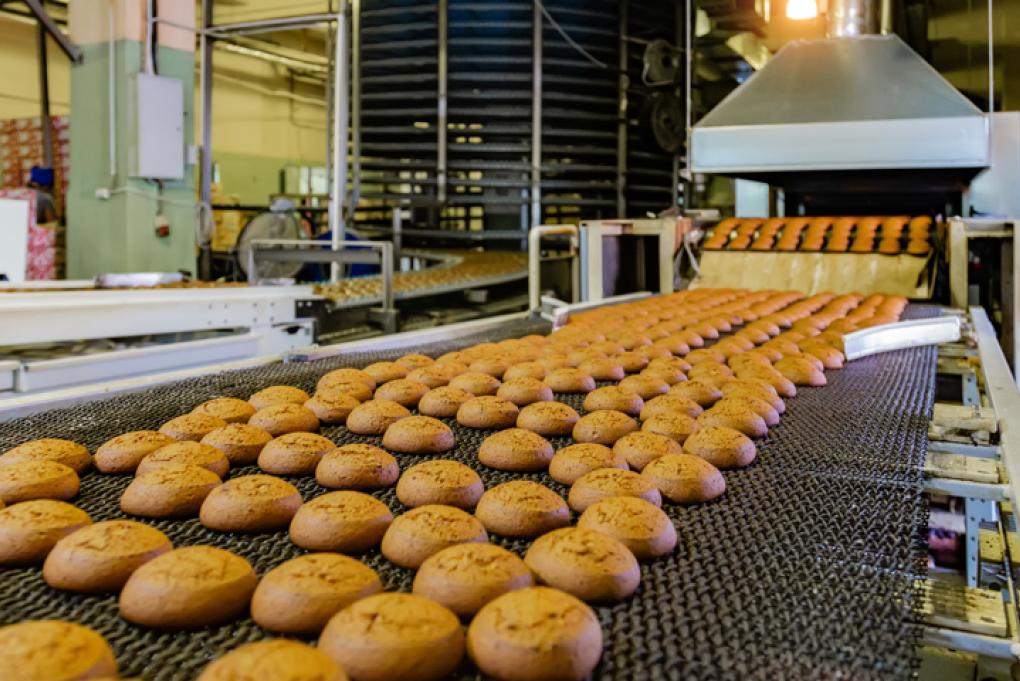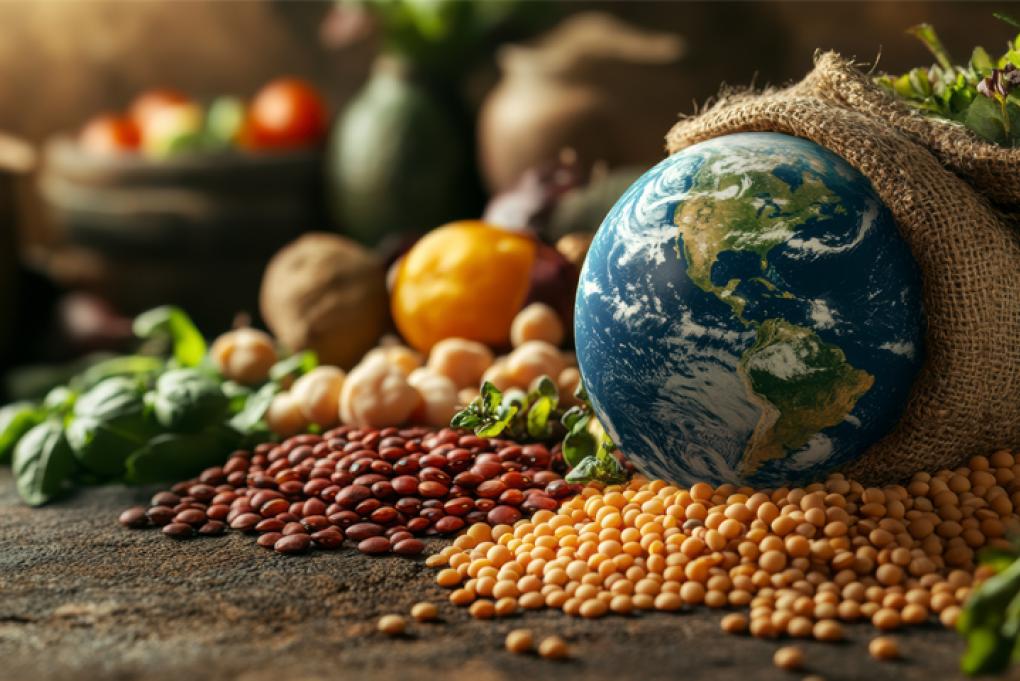
Citrus fruit: a leading sector despite the complicated context
The citrus fruit sector is one of the most important in the Spanish agrifood system and a leading player in international export markets. Its production structure is typically atomised, making it more difficult to modernise the farms, and the sector has some important challenges to tackle. In particular, strong competition from non-EU countries at a time when production costs are rising sharply, accentuated by a prolonged drought and the war in Ukraine. In any case, the figures suggest that Spain’s citrus production continues to be the most competitive in the world, thanks to its hard-won reputation as a product of the highest quality produced under the strictest health standards.
Spain, the «vegetable garden of Europe»
Spain’s fruit and vegetable sector is one of the most important in the world: it ranks eighth globally and first in the EU, with almost two million hectares dedicated to these crops and a production in excess of 28 million tonnes, totalling over 15.1 billion euros.17 It is the most important food group within the Spanish agrifood sector, accounting for 50% of plant production and 30% of agrarian production (2020 data).
- 17Ministry of Agriculture, Fisheries and Food (2021): «Encuesta sobre superficies y rendimientos de cultivos (ESYRCE)» and (2021): «Cifras del Sector de Frutas y Hortalizas», updated to 2020.
Spain is characterised by the great diversity of crops grown throughout the country, both in the open air and in greenhouses, rainfed and irrigated. Cooperatives also play a notable role and are very widespread in this sector.18
- 1823% of Spain’s agrifood cooperatives are in the fruit and vegetable sector, with the largest production within the cooperative sector in terms of direct turnover, namely 31% of the total. OSCAE (2022): «El cooperativismo agroalimentario español. Informe 2021». Cooperativas Agroalimentarias de España.
The sector is strongly oriented towards exports, as around 50% of what is grown is sent to foreign markets, this proportion even exceeding 70% for some products, such as greenhouse vegetables (tomatoes, peppers and cucumbers), lettuce and lemons.
Spain is the leading exporter of fruit and vegetables in the EU and the third largest in the world, behind China and the US. In recent years exports have performed very well, reaching almost 14.7 million tonnes in 2021, very close to the historical peak in 2019, with a value of more than 17.6 billion euros. The main products exported are greenhouse vegetables, citrus fruit (especially oranges), peaches and nectarines, and the main destination is the EU, which receives more than 90% of our exports, especially Germany and France.
The balance of trade is very positive: last year there was a surplus of almost 12.9 billion euros, equivalent to 1.1% of GDP. Nevertheless, although this balance has almost doubled in the past decade, it has been losing weight in the overall agrifood trade surplus in favour of other products that have performed even better, mainly meat and, to a lesser extent, beverages.
The citrus sector in Spain
Citrus fruits are one of the most important products within fruit and vegetables, both in terms of production volume and sales. With a cultivated area of 307,343 hectares and production at approximately 7 million tonnes per year,19 Spain is the leader in the EU with around 56% of the total, well ahead of Italy and Greece.20 Spain’s organic citriculture is particularly significant as it is clearly expanding: in the past five years, the area devoted to organic citriculture has grown by almost 95% and it already accounts for 3% of the total organic area and 6.5% of the whole area devoted to growing citrus fruits.21
- 19Ministry of Agriculture, Fisheries and Food (2021): «Encuesta sobre superficies y rendimientos de cultivos (ESYRCE)» and (2022): «Desarrollo de la campaña de cítricos 2021/22». Oranges account for almost half the citrus production, ahead of mandarins (33%), lemons (16%) and grapefruit (1%).
- 20Cajamar (2022): «Observatorio sobre el sector agroalimentario español en el contexto europeo. Informe 2021». However, this figure has fallen in recent years (in 2016 it reached 63.5%).
- 21Ministry of Agriculture, Fisheries and Food (2021): «Análisis de la caracterización y proyección de la producción ecológica en España en 2020». Organic lemons are particularly successful, with around 173,000 tonnes in 2020, 14% of total lemon production in Spain and 41.5% of organic citrus fruits. The standard contract for organic lemons is the only one approved in Spain for an organic product. AILIMPO (2022): «Memoria 2021».
The citrus fruit sector has 54,418 farms (5.9% of the total), with a utilised agricultural area (UAA) of 288,365 hectares (1.2% of the total), making the average size very small (just over 5 hectares). In fact, it is one of the agricultural sectors with the smallest average area, second only to tropical fruit.22 This factor affects its viability insofar as it limits improvements in productivity because it is so difficult for farmers to adopt new technology and modernise their operations. It is also the oldest agricultural sector, with owners averaging 65.8 years, as well as one of the most feminised (37% of owners are women).
Citrus fruit is mainly consumed fresh, once it has been sorted, graded, washed and packed,23 so that its value chain goes from production and sale at origin (fruit and vegetable market) to sale at destination (wholesalers, purchasing centre and distribution platform) and the final sale in retail outlets.24 One of the problems facing Spanish citriculture is the low degree of integration between points of production and sale. The result is limited innovation in organisation terms and in the structure of the value chain, as well as the accumulation of production and commercial inefficiencies that reduce the sector’s competitiveness; all of this in a context of strong competition from non-EU countries and a complicated relationship with EU trade agreements, as we will see below.25
- 22National Statistics Institute (2022): «Censo Agrario 2020» and Ministry of Agriculture, Fisheries and Food (2020): «Ficha Sectorial por Orientación Técnico-Económica (OTE), Cítricos (datos de 2018)».
- 23To a lesser extent, citrus fruits are also consumed, after being processed and prepared industrially, in the form of juices or jams, while the bark also has industrial applications and can be used in the manufacture of animal feed.
- 24Almost a third of oranges, which account for 64% of the citrus fruits consumed by households, are bought in supermarkets and self-service stores, closely followed by traditional shops. Ministry of Agriculture, Fisheries and Food (2022): «Informe anual de consumo alimentario 2021».
- 25Cajamar (2020): «Una hoja de ruta para la citricultura española». In a competitive and mature market such as the one for citrus fruit, viability depends on competitive advantages in terms of costs (associated with size) or quality and service (linked to professionalism and availability of capital). In this respect, in recent years we have witnessed three important changes among vendors in the sector: concentration, involvement in production (vertical integration of production towards the market) and the incorporation of investment funds. Mercasa (2021): «Panorama general de los cítricos en España».
The citrus sector is facing difficulties due to increasing competition, weakening demand and a sharp rise in costs
Now that the worst of the pandemic is behind us and demand has returned to normal,26 citrus fruit prices are on a downward trend, returning to the negative performance of the pre-COVID period. The current season is taking place in a very complex scenario, with activity paralysed by a transport strike at the start of the year, the high level of stocks from other countries, especially Argentina and South Africa (exacerbated by delays resulting from logistical problems in world trade), weak EU demand and rising costs (fertilisers, fuels) aggravated by the war in Ukraine.27 To all this must be added the recovery of domestic production, high temperatures which discourage consumption and also other factors of a more structural nature, in particular increased competition from substitutes for oranges, traditionally the fruit par excellence in the cold months of the year.28
- 26Thanks to the «healthy» label (the high vitamin C content is essential for boosting the immune system), in 2020 households increased their consumption of citrus fruits exceptionally, turning around the downward trend of previous years.
- 27Ministry of Agriculture, Fisheries and Food (2022): «Desarrollo de la campana de cítricos 2021/22».
- 28Cajamar (2022): «Cítricos, no solo la competencia de Sudáfrica hunde los precios dela naranja. Análisis de mercados».
Competition is threatening Spain’s leading position in international trade
Spain is the world’s leading exporter of citrus fruits with around 4 million tonnes per year, about a quarter of global exports. Almost 60% of Spanish citrus fruit production is destined for foreign markets, a percentage that is close to 80% in the case of grapefruit. Citrus fruits occupy second place among our country’s agrifood exports, only beaten by pork; they are sold to almost 90 countries, although there is a high concentration of sales to our EU partners, which absorbed more than 86% of the volume sold in 2021 (a weight that has even increased in recent years, almost 2 pp since 2010), with Germany and France as prominent destinations (29.5% and 21.5%, respectively). Nevertheless, Spain’s export markets are highly diversified when compared with other citrus exporters, with the exception of South Africa.
This high dependence on the European market (if we include the UK, the third largest export destination, it is 94%) can be a risk factor.29 On the other hand, one positive factor is the country’s proximity to the end consumer, making it easier to transport more delicate products (organic, zero waste or untreated). Furthermore, phytosanitary standards are more demanding in Europe, which guarantees high quality, sustainable and healthy products.
Citrus exports fell in 2021, following the extraordinary performance of the previous year which was affected by the pandemic. The value of exports fell by 3.9% last year as a result of a drop in both the average export price (–1.2%) and sales volume (–2.8%). This represents a correction after the historic figures achieved the previous year, with growth of 12.4%, the strongest in almost two decades, thanks to the average price soaring by 18.1%, as a result of intensified demand and the shortage of supply during the hardest months of COVID-19.
- 29Cajamar (2022): «Análisis de las exportaciones agroalimentarias 2021».
Spanish citrus fruits are being displaced in global markets by their main rivals, especially South Africa
In general, in recent years there has been a downward trend in citrus exports in volume terms (–11.4% in 2015-2021), which translates into a loss of weight in world trade, as shown in the chart below. However, in terms of value, sales have grown by 8.2% during the same period, thanks to strong growth in the average price (22.1%).30
- 30One explanation for this divergence could be the sector’s commitment to high quality production, with premium or organic products. Alimarket (2021): «Frutas y hortalizas. La sostenibilidad como nuevo paradigma productivo».
In the global citrus market, the remarkable dynamism of South Africa’s exports is particularly noteworthy, growing by 45% since 2015, making it Spain’s main citrus supplier (six years earlier it was in fourth place, behind Argentina, Portugal and France).31 At the level of the EU, South Africa is the leading non-EU citrus supplier with almost 40% of the total, followed by Egypt, Türkiye and Morocco, but at a great distance.
This extensive penetration of foreign produce into Europe represents a clear risk for Spanish citrus fruit, which the authorities are aware of and seem to be doing something about. Spain’s Ministry of Agriculture, Fisheries and Food has developed a Plan of Measures for the citrus sector, adopted on 2 April 2019. This establishes, as measure 5.3, closer monitoring of EU citrus imports with the aim of exhaustively tracking the volumes of citrus imported and where they come from.32

As a result, Spain’s citrus fruit has lost share in EU imports (7 pp between 2015 and 2021) in favour of its rivals, some from the EU (Greece and, above all, the Netherlands) but especially from outside the EU (South Africa and Egypt), against which Spain has been losing competitiveness in the European market. However, Spain is still the main supplier with 40% of EU citrus purchases.33
As can be seen in the chart below, European markets, which are the main destination for our exports, seem to becoming «exhausted» to a certain extent (with the exception of Portugal). The sector should therefore seek alternatives and improve its positioning in other, more dynamic markets with a growing demand.34
- 33Within the EU, Spain is followed at a distance by the Netherlands (as a re-exporter, since it is not a producer), Germany and Greece. South Africa, Egypt and Türkiye stand out among the non-EU countries.
- 34Ministry of Agriculture, Fisheries and Food (2019): «Estudio comparativo de los costes de producción de naranja, almendra, melocotón y tomate entre países productores y el análisis de impacto de los acuerdos de libre comercio en el marco de la elaboración del plan estratégico de la PAC».
Spanish citrus fruits have lost share in EU imports to their rivals, especially from outside the EU such as South Africa and Egypt

Within Europe, for example, the penetration of Spanish citrus fruits is growing strongly in Finland. Exports to this country grew by almost 65% in volume terms from 2015 to 2021 and it currently ranks 11th among the main destinations. Outside the EU, Canada is an important market with a 14.4% increase over the same period (13th in the ranking). Exports outside the EU are key, as they allow Spain to reduce its dependence on markets that are already mature but in which it is increasingly difficult to ensure profitability.
The impact of EU trade policy
Some voices (professional associations) have suggested that the EU’s trade policy make have something to do with Spain’s citrus fruit losing weight, claiming that it creates an imbalance in the single market by facilitating imports from non-EU countries competing with Spain. This situation is aggravated because imports are not subject to the same production, traceability, environmental and social requirements as fruit grown in the EU.
The EU has signed nearly 80 agreements with countries around the world in its commitment to open up trade as a means to boost countries’ development.35 Under these agreements, companies from the EU and partner countries enjoy more advantageous conditions than those offered under the World Trade Organisation (WTO): lower or zero tariffs, simpler and faster customs procedures, recognition of product certificates, etc.
- 35Article 133 of the Treaty establishing the European Community establishes the Common Commercial Policy (CCP), which aims to promote the development of world trade, the progressive abolition of restrictions on international trade and the lowering of customs barriers. The CCP provides for Free Trade Agreements (FTAs), a Generalised Scheme of Preferences (GSP) and Economic Partnership Agreements (EPAs).
Agreements between the EU and non-EU citrus exporting countries give the latter a competitive advantage over Spanish products
However, Spanish exports outside the EU, like those of the other member states, are negotiated bilaterally; in other words, the growing globalisation of the EU market is not accompanied by a real opening up of new markets for EU producers.36 The sector has been warning of this situation and is demanding that, before trade treaties are approved, the bilateral relations of each country should be taken into account in order to apply reciprocity (so-called «mirror clauses»), particularly in terms of tariff or phytosanitary barriers, to ensure that agreements with third countries incorporate European standards.
- 36The EU is, de facto, the only area in the world that does not apply import protocols to any country or product as long as they comply with international trade rules. In addition, the protocols are sometimes different for different types of citrus fruit and, in extreme cases, a distinction is made within families by variety. Mercasa (2021): «Panorama general de los cítricos en España».



